Area under the plasma concentration-time curve AUC and maximum plasma concentration Cmax are the. Objective The basic design for bioequivalence study is determined by. Bioequivalence study design
Bioequivalence Study Design, Bioequivalence studies Evaluation and Study design Determination of foreign matter heavy metals pesticide residues photo toxi. Bioequivalence may sometimes be demonstrated using an in-vitro bioequivalence standard especially when such an in-vitro test has been correlated with human in-vivo bioavailability data. Thus in practice a standard two-sequence two-period or 2x2 crossover design is often applied. This guidance document is being distributed for comment purposes only.
 Design Of The Four Bioequivalence Studies Download Scientific Diagram From researchgate.net
Design Of The Four Bioequivalence Studies Download Scientific Diagram From researchgate.net
A bioequivalence study was carried out on two formulations of doxepin containing 15 of the active cis isomer and 85 of the less active trans isomerThe 90 confidence intervals In AUClast In Cmax and In CmaxAUClast for Ndesmethyldoxepin fell entirely within bioequivalence li whether stereoselective or non-stereoselective data were analyzed. A single-dose cross-over design is recommended. In vivo comparative bioavailability studies. Thus in practice a standard two-sequence two-period or 2x2 crossover design is often applied.
Thus in practice a standard two-sequence two-period or 2x2 crossover design is often applied.
Read another article:
In other situations bioequivalence may sometimes be demonstrated through comparative clinical trials or pharmacodynamic studies. Guidance for the design of bioequivalence studies. 90 CI of mean TR. In a simple parallel study design the statistical analysis should be conducted including the between-subject variability to calculate the 90 confidence interval of the treatment mean difference. 41 Design conduct and evaluation of bioequivalence studies The number of studies and study design depend on the physico-chemical characteristics of the substance its pharmacokinetic properties and proportionality in composition and should be justified accordingly.
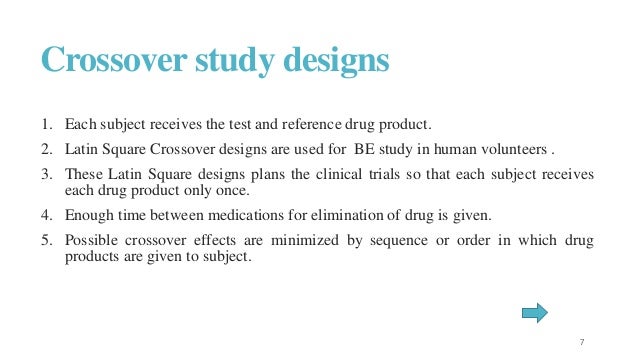 Source: slideshare.net
Source: slideshare.net
The EoI includes 200 mg capsules. The most common designs for bioequivalence studies are replicated crossover nonreplicated crossover and parallel. The availability of analytical methods 4. APIdays Paris 2019 - Innovation scale APIs as Digital Factories New Machi. Bioequivalence Study Design.
 Source: researchgate.net
Source: researchgate.net
90 CI of mean TR. Containing antacids GMWSI â Bioequivalence Study Information Form Web view in submission of study site normal values for. In vivo comparative bioavailability studies. In bioequivalence studies the study design also determines the appropriate statistical model for data analysis. Study Design Of The Crossover Bioequivalence Study Download Table.
 Source: slideshare.net
Source: slideshare.net
In other situations bioequivalence may sometimes be demonstrated through comparative clinical trials or pharmacodynamic studies. In a simple parallel study design the statistical analysis should be conducted including the between-subject variability to calculate the 90 confidence interval of the treatment mean difference. Guidance for the design of bioequivalence studies. Conclusion of bioequivalence studies Study design appropri ate and study conduct satisfactory No critical deficiencies or abnormalities methods or statistical analysis Bioequivalence established. Bioequivalence Study Design.
 Source: studylib.net
Source: studylib.net
Bioequivalence - Study Design Considerations Study Design Considerations. An overview of the generic drug approval process Division of Bioequivalence II Reviewer Kimberly W. Based on pharmacokinetic PK data collected bioequivalence can then be assessed using valid statistical methods according to some pre-specified regulatory criteria for bioequivalence. Objective The basic design for bioequivalence study is determined by. Best Bioequivalence Study Template Pekka Heikkila Ceo Statfinn Oy.
 Source: semanticscholar.org
Source: semanticscholar.org
Design of bioequivalence studies WHO supports applicants in addressing specific scientific issues related to product development and design of bioequivalence studies that are intended to support an application for prequalification. 8000-12500 C max AUC 0-t and AUC 0-inf Narrow therapeutic index drug. Nature of reference material and dosage form to be tested 3. In vivo comparative bioavailability studies. Pdf The Basic Regulatory Considerations And Prospects For Conducting Bioavailability Bioequivalence Ba Be Studies An Overview Semantic Scholar.
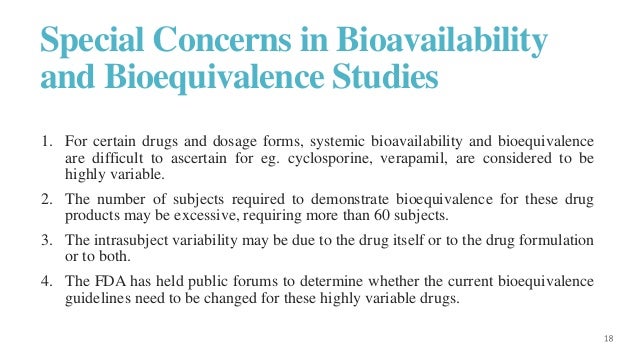 Source: slideshare.net
Source: slideshare.net
Based on pharmacokinetic PK data collected bioequivalence can then be assessed using valid statistical methods according to some pre-specified regulatory criteria for bioequivalence. The test products used in the bioequivalence study must be prepared in accordance with GMP regulations. A bioequivalence study single-dose or multi-dose should be crossover in design unless a parallel or other design is more appropriate for valid scientific reasons. The most common designs for bioequivalence studies are replicated crossover nonreplicated crossover and parallel. Bioequivalence Study Design.
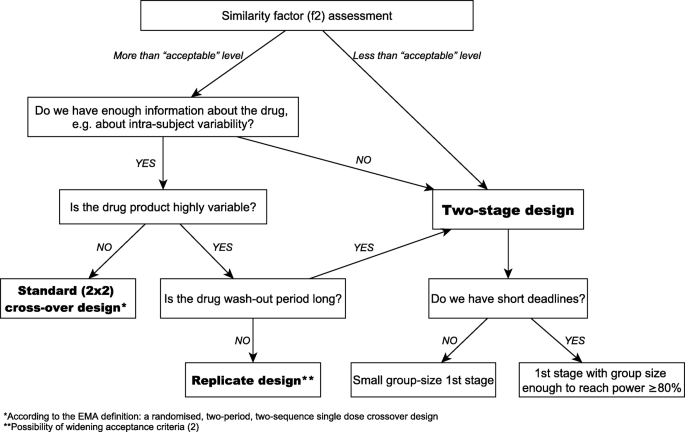 Source: link.springer.com
Source: link.springer.com
Biometrical concepts of alternative designs and pooled analysis. Bioequivalence may sometimes be demonstrated using an in-vitro bioequivalence standard especially when such an in-vitro test has been correlated with human in-vivo bioavailability data. As recommended by the USFDA in most bioequivalence studies a test drug is compared with the standard reference drug in a group of normal healthy subjects of age 1855 years each receives both the treatments alternately in a crossover fashion two-period two-treatment crossover design with the two phases of treatment separated by a washout period. The EoI includes 200 mg capsules. 10th Anniversary Of A Two Stage Design In Bioequivalence Why Has It Still Not Been Implemented Springerlink.
 Source: slideshare.net
Source: slideshare.net
Denote the test product and the reference product by T and R respectively. Biometrical concepts of alternative designs and pooled analysis. The availability of analytical methods 4. Denote the test product and the reference product by T and R respectively. Bioavilability And Bioequivalence Study Designs.
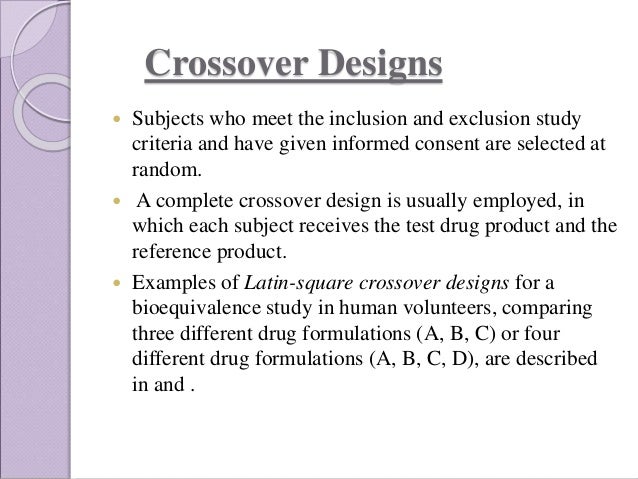 Source: slideshare.net
Source: slideshare.net
In a parallel design each subject receives only one formulation in randomized fashion whereas in a crossover design each subject receives different formulations in different time periods. 90 CI of mean TR. Nature of reference material and dosage form to be tested 3. Based on pharmacokinetic PK data collected bioequivalence can then be assessed using valid statistical methods according to some pre-specified regulatory criteria for bioequivalence. Bioavilability And Bioequivalence Study Designs.
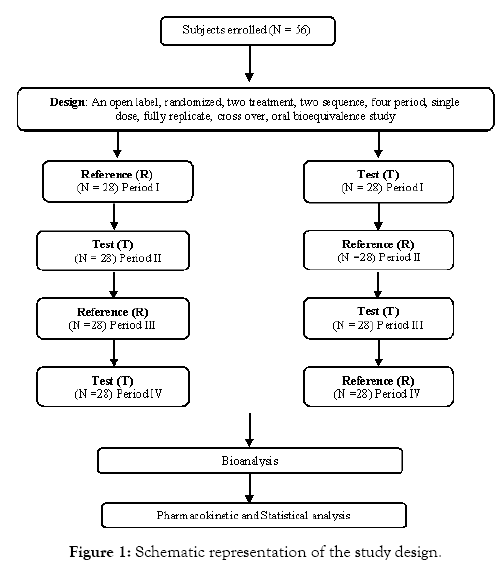 Source: longdom.org
Source: longdom.org
Nature of reference material and dosage form to be tested 3. Biometrical concepts of alternative designs and pooled analysis. A bioequivalence study single-dose or multi-dose should be crossover in design unless a parallel or other design is more appropriate for valid scientific reasons. This guidance document is being distributed for comment purposes only. A Full Replicate In Vivo Bioequivalence Study Of Two Idelalisib 150 Mg Tablets In Fasted Healthy Adult Human Subjects.
 Source: researchgate.net
Source: researchgate.net
Denote the test product and the reference product by T and R respectively. This guidance document is being distributed for comment purposes only. In vivo comparative bioavailability studies. 8000-12500 C max AUC 0-t and AUC 0-inf Narrow therapeutic index drug. Representation Of Parallel Study Design Download Scientific Diagram.
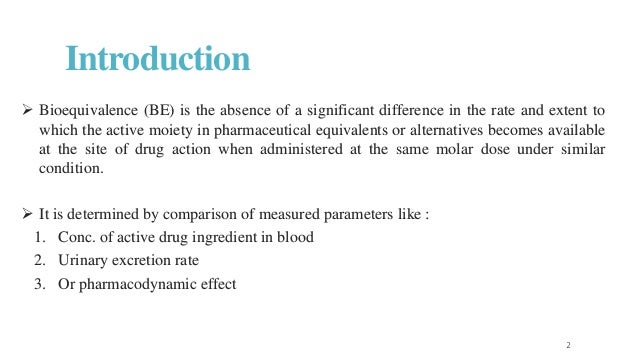 Source: slideshare.net
Source: slideshare.net
Parallel design 56. In other situations bioequivalence may sometimes be demonstrated through comparative clinical trials or pharmacodynamic studies. Guidance for the design of bioequivalence studies. Provides a practical overview of the design and analysis of bioequivalence studies. Bioequivalence Study Design.
 Source: slideshare.net
Source: slideshare.net
Bioequivalence studies Evaluation and Study design Determination of foreign matter heavy metals pesticide residues photo toxi. Bioequivalence studies are often part of applications for generic veterinary medicinal products to allow bridging of safety and efficacy data associated with a reference veterinary medicinal product. Nature of reference material and dosage form to be tested 3. As recommended by the USFDA in most bioequivalence studies a test drug is compared with the standard reference drug in a group of normal healthy subjects of age 1855 years each receives both the treatments alternately in a crossover fashion two-period two-treatment crossover design with the two phases of treatment separated by a washout period. Bioavilability And Bioequivalence Study Designs.
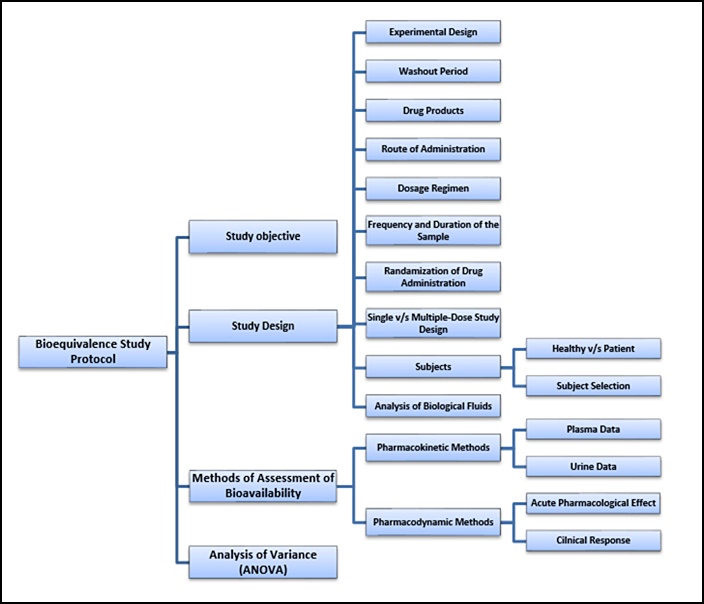 Source: 14impressions.in
Source: 14impressions.in
The most common designs for bioequivalence studies are replicated crossover nonreplicated crossover and parallel. Conclusion of bioequivalence studies Study design appropri ate and study conduct satisfactory No critical deficiencies or abnormalities methods or statistical analysis Bioequivalence established. MAIN GUIDELINE TEXT 31 Design conduct and evaluation of bioequivalence studies The number of studies. Presents the recent developments in methodology including population and individual bioequivalence. Elements Of Bioequivalence Study Protocol.
 Source: researchgate.net
Source: researchgate.net
In a simple parallel study design the statistical analysis should be conducted including the between-subject variability to calculate the 90 confidence interval of the treatment mean difference. Objective The basic design for bioequivalence study is determined by. Bioequivalence may sometimes be demonstrated using an in-vitro bioequivalence standard especially when such an in-vitro test has been correlated with human in-vivo bioavailability data. This study reviews the requirements of bioequivalence with study parameters such as study design fasting or fed state studies volunteers recruitment. Study Design For The Bioequivalence Evaluation Of Test And Reference Download Table.







